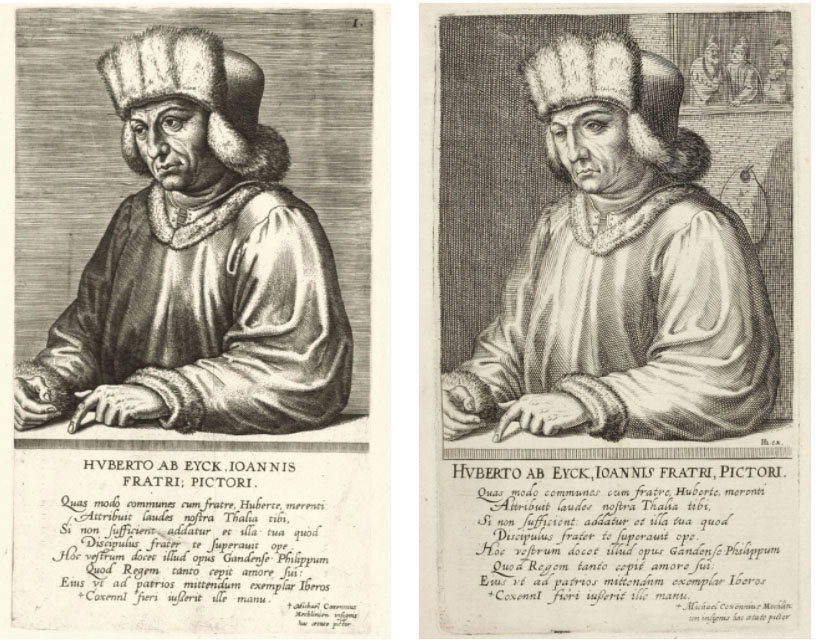Engraving
Attributed to Johannes Wierix, 1572.
Transcription of Inscription [Lampsonius]:
HUBERTO AB EYCK, IOANNIS FRATRI, PICTORI.
Quas modo communes cum fratre, Huberte, merenti
Attribuit laudes nostra Thalia tibi,
Si non sufficient : addatur et illa tua quod
Discipulus frater te superavit ope.
Hoc vestrum docet illud opus Gandense Philippum
Quod Regem tanto cepit amore sui :
Eius ut ad patrios mittendum exemplar Iberos
+Coxennii fieri iusserit ille manu.
+Michael Coxennius Mechlin:
in insignis hac aetate pictor
Translation of Inscription [Lampsonius]:
To Hubert van Eyck, brother of Jan, painter.
Hubert, if the praises which our Thalia1 recently attributed to you along with your deserving brother are not enough, let this [praise] of yours be added, that your brother, as your student, outdid you in ability2 That work of yours in Ghent3 teaches this, which filled Philip with such love of it,4 that he ordered a copy of it to be made by the hand of Coxennius, to be sent to his native Spaniards.
Note (referring to Coxennius) – Michael Coxennius of Mechelen, a famous painter of that age.
Hollstein 1994 no. 82
Karel Van Mander’s biography of Hubert van Eyck
Grove Art Online biography
Footnotes:
- One of the muses. Cf. The poem on Lucas van Leyden, “nostrae …Camenae”.
- “ope” could also mean “wealth”. Either way, it’s hard to see (without knowing the context) how Hubert will feel this adds to his praises.
- This for “vestrum”, which is plural, so the work is being credited to both brothers.
- “amore sui” could also mean “love of himself”, but I am presuming that the author is referring to the Lam Gods.



